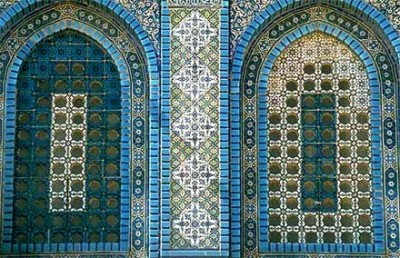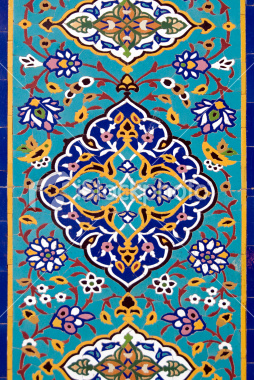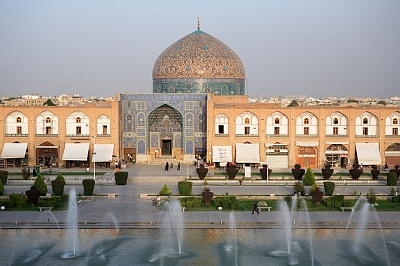As an Art History major, people always ask me: Who is your favourite artist? In my opinion, the mark of a great artist will leave one in awe. The classic painters of our time no doubt had unparalleled talent, but it is not the art of painters or sculptors we know from the Renaissance or the nineteenth century that leave me breathless, but rather the detailed and devoted work found in Middle Eastern architecture. What comes to mind when you think of Middle Eastern decoration and architecture? The Taj Mahal? The Dome of the Rock? While both are incredible feats, especially for their time, this is just the surface of the artistry found in Islamic architecture.

Taj Mahal, Agra, India, 1653
Islamic ceramic tiles are one of the most distinctive features in Islamic Art. Glazed tiles have been one of the most effective means of achieving chromatic harmony. The use of wall tiles as decoration only began in the 9th century.
The development of glazed tiles during the Abbasid dynasty went hand-in-hand with the growth of the ceramics industry. The first Islamic tiles were over-glazed with polychrome lustre, meaning designs were painted on the glazed surface with various metallic oxides, and were then fired.

Ceramic Bowl, Abbasid Dynasty, 9th Century, Iraq, www.islamic-arts.org
In Eastern Islamic practice, tiles are arranged in geometric, vegetal and epigraphic motifs. Human or animal motifs are rare, as these images go against the words of the Qur’an, and is seen as a sin. In Western Islamic lands, geometric motifs are most dominant.
One of the most breathtaking pieces of architecture that features incredible tile work is the Sheikh Lutfallah Mosque, in Isfahan, Iran, built in 1611. The Mosque and adjoining city-square were commissioned by Shah Abbas, the leader who relocated the Safavid dynasty’s capital to Isfahan.
The Dome of the Lutfallah Mosque to this day is virtually untouched, and has not been restored to the same extent as the mosque’s front portal. The apex of the dome features tile work replicating a sunburst made of medallions ascending in size, which flow with the curve of the dome. The medallions feature flower motifs against the monochromatic color scheme. The art of the ceramic tiles was said to be so perfect that the artists were credited by having their names enscripted into the tiles.

The Dome of the Lutfallah Mosque, Isfahan, Iran, 1611, www.persianguide.com
Could you answer the question: What is your favourite artwork/artist? What artworks do you find jaw-dropping-awe-evoking-awesomely-awesome? Share them with us!
Related articles










Comments (0)